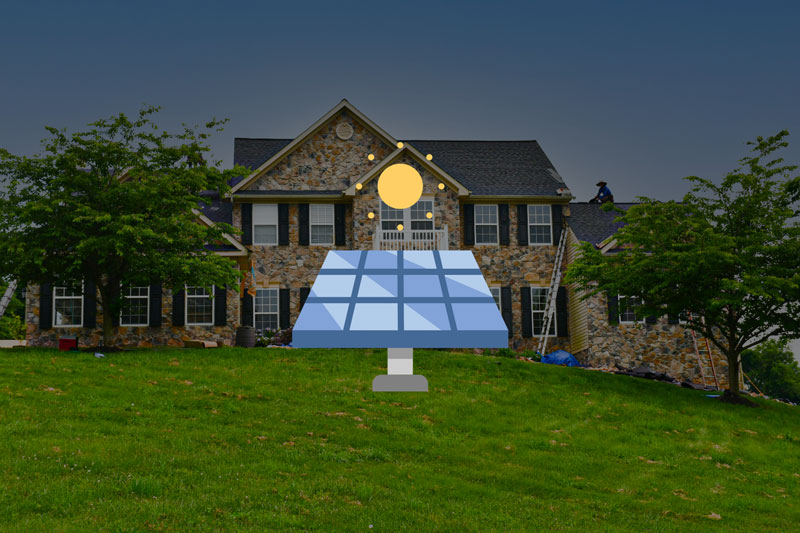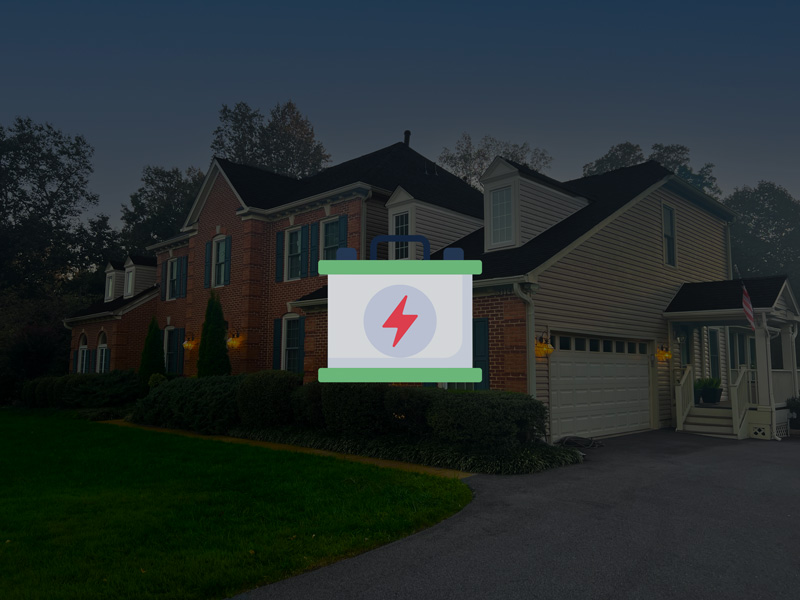How Solar Works: Explaining Solar Energy Utilization
In this article, we will dive into how solar works and its diverse applications. Solar power, a cornerstone of renewable energy, harnesses the sun’s radiant energy to generate electricity, offering a sustainable solution to our energy needs.

Unveiling the Dynamics of Solar Energy
Exploring the Fundamental Concept of Solar Energy
Solar energy, often termed as photovoltaic energy, is a pivotal player in the realm of renewable resources. The significance of this clean and abundant energy source cannot be overstated, as it not only reduces our dependence on non-renewable fossil fuels but also curbs greenhouse gas emissions.
The Sun’s Radiant Bounty:
At the core of solar energy lies the sun, our colossal celestial furnace that showers our planet with an unfathomable amount of energy. This radiant energy is composed of tiny packets called photons, which travel from the sun to Earth in a mere 8 minutes and 20 seconds.
Harnessing Photovoltaic Cells:
The process of converting sunlight into usable energy is orchestrated by photovoltaic cells. These specialized cells, often known as solar cells, are predominantly made from silicon, a semiconductor material. When sunlight strikes these cells, the photons transfer their energy to electrons, liberating them from their atoms and creating an electric current.
Transforming DC into AC:
However, the electricity generated by solar cells is in the form of direct current (DC), whereas our homes and businesses primarily utilize alternating current (AC). Here’s where inverters come into play. Inverters are like linguistic interpreters, translating the language of energy from DC to AC, making it compatible with our electrical systems.

How Solar Panels Harness Sunlight
Solar panels, the heart of any photovoltaic system, are marvels of modern technology that capture the sun’s energy and transform it into usable electricity. Let’s explore the intricate dance within these panels that powers our homes and businesses.
Composition and Components:
Solar panels are intricate assemblies composed of several layers working in harmony. At the core are photovoltaic cells, often made from crystalline silicon or thin-film materials. These cells are sandwiched between protective layers, often tempered glass on the front and a polymer backing. Together, these elements shield the cells from the elements while allowing sunlight to penetrate.
The Photovoltaic Effect:
Central to the magic of solar panels is the photovoltaic effect. When photons, the tiny packets of energy from sunlight, strike the surface of the photovoltaic cells, they agitate the electrons within the cell’s material. This agitation knocks the electrons loose, creating an electric current. It’s like a choreographed dance where sunlight’s energy prompts an energetic response within the material.
Semiconductor Alchemy:
Key to this process is the semiconductor nature of the cell’s material, typically silicon. Silicon’s atomic structure allows it to hold both positively charged “holes” and negatively charged electrons. When sunlight frees an electron, the material guides it through an external circuit, creating an electric flow. This flow is direct current (DC), which is the form of electricity generated by the panels.

The Role of Inverters: Converting DC to AC Power
In the realm of solar energy systems, inverters are unsung heroes that perform a vital task: transforming the direct current (DC) generated by solar panels into the alternating current (AC) that powers our homes and businesses. Let’s delve into the world of inverters and their pivotal role in making solar energy usable.
Introduction to Inverters:
Inverters are the linguistic bridge between the language of energy generated by solar panels and the electrical appliances that speak the AC dialect. They act as transformers, changing the nature of the current to match the requirements of our daily lives. In essence, they’re the interpreters ensuring a seamless conversation between solar panels and our homes.
DC to AC Transformation:
Solar panels are remarkably efficient at generating DC, but the majority of our appliances rely on AC. This is where inverters shine. They take the direct current produced by the panels and convert it into alternating current, which aligns with the power grid’s language. This transformed energy can then flow into our electrical systems, lighting up rooms and energizing devices.
Types of Inverters:
There’s a diverse range of inverters catering to different solar system setups. String inverters, for instance, are the traditional workhorses that connect an entire string of panels to a single inverter. On the other hand, microinverters are small, module-level inverters that accompany each solar panel, optimizing energy production and enabling better system monitoring. Power optimizers take a middle ground, ensuring maximum power harvest from each panel while using a centralized inverter.

Storing Excess Energy with Batteries
Understanding the Functionality of Solar Battery Storage
In the dynamic world of solar energy, storing the surplus power generated during sun-drenched days is a key puzzle piece for round-the-clock energy availability. Let’s delve into the captivating realm of solar battery storage and how it addresses the ebb and flow of energy supply.
Challenges and the Role of Batteries:
Harnessing the sun’s energy is a remarkable feat, but its availability fluctuates with the time of day and weather conditions. This challenge of intermittency can be mitigated by storing excess energy for later use. This is where solar batteries step in as reservoirs, allowing us to tap into stored energy during cloudy periods or even after the sun has set.
Advantages of Energy Storage:
The beauty of solar battery storage lies in its ability to extend the benefits of solar energy beyond daylight hours. By saving the excess energy produced during peak sun periods, homeowners can tap into their energy reserves during the evening or when the skies are overcast. This self-sufficiency not only reduces reliance on the grid but also provides a hedge against potential power outages.
Variety of Battery Chemistries:
Solar battery storage isn’t a one-size-fits-all solution; it’s an intricate tapestry of battery chemistries, each with its strengths. Lithium-ion batteries, for instance, are lauded for their high energy density and durability, making them a popular choice. Lead-acid batteries, on the other hand, offer cost-effective options and are well-suited for off-grid systems. Emerging technologies like flow batteries also show promise for larger-scale storage applications.

Integrating Solar Energy into Roofing Systems
Exploring the Synergy Between Solar Panels and Roof Replacement
The fusion of solar panels with roofing systems is a powerful harmony that not only generates clean energy but also enhances the very structure sheltering us. This section uncovers the intriguing interplay between solar panels and roof replacement, paving the way for a more sustainable and aesthetically pleasing future.
Introduction to Integrated Solar Solutions:
Imagine a scenario where your roof not only shelters you from the elements but also harnesses the sun’s energy to power your life. This concept is at the heart of integrating solar panels with roof replacement, where the synergy of form and function coexists.
Structural Integrity and Alignment:
When integrating solar panels into a roofing system, structural integrity is paramount. The weight of solar panels, along with the additional load during installation, necessitates a sturdy foundation. Hence, aligning the installation with a roof replacement project allows for a comprehensive assessment of the structure’s capacity to support both the panels and the new roofing materials.
Aesthetic and Efficiency Advantages:
One of the standout benefits of combining solar installation with roof replacement is the aesthetic upgrade it offers. Replacing an aging roof alongside solar installation ensures a visually cohesive appearance. Moreover, the integration eliminates the need for retrofitting, maintaining the sleek lines and enhancing your property’s curb appeal.

Steps to Seamlessly Replace a Roof with Solar Integration
Step-by-Step Guide to Combining Roof Replacement with Solar Installation
Embarking on the journey of integrating solar panels into a roof replacement project requires careful planning and execution. Let’s explore the systematic approach to achieving this harmonious blend of energy efficiency and architectural enhancement.
- Preparing for the Project:
Assessment is the cornerstone of success. Begin by evaluating the condition of the existing roof. Is it time for a replacement? Factor in your energy needs and budget considerations as well. These preliminary steps set the stage for a well-informed decision.
- Collaboration with Experts:
Seek guidance from roofing contractors and solar experts. Their insights are invaluable for devising a comprehensive plan that addresses the technical aspects of solar integration while ensuring the structural integrity of your roofing system.
Step-by-Step Process:
- a) Removing the Old Roof: A blank canvas starts with a clean slate. Old materials are carefully removed, making way for a fresh beginning.
- b) Structural Reinforcement: Depending on the weight of solar panels, reinforcing the structure might be necessary. This ensures your roof is primed to support the additional load.
- c) Solar Panel Installation: The heart of the project, solar panels are meticulously positioned. Precision is key to optimal energy production.
- d) Sealing and Insulation: Weatherproofing and insulation are crucial. Proper sealing safeguards against leaks, while insulation ensures energy efficiency indoors.
Post-Installation Considerations:
After the installation dust settles, keep a vigilant eye on system performance. Regular monitoring guarantees optimal energy production. Routine maintenance checks the health of both roof and panels. Consider energy-maximizing strategies to make the most of your solar integration.
View More Articles
Please Share!











